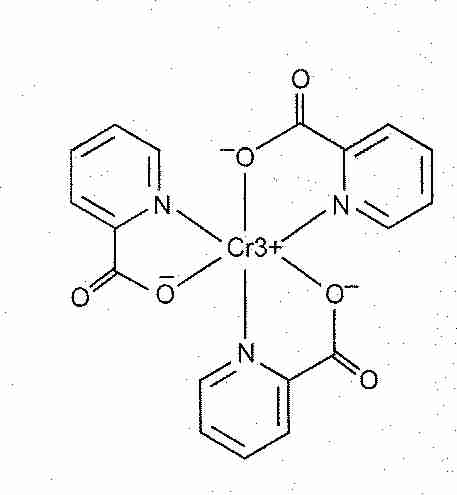

National Institute for Occupational Safety and Health (NIOSH). ^ a b c NIOSH Pocket Guide to Chemical Hazards.^ "Chromium(III) chloride hexahydrate Technipur™ | Sigma-Aldrich".^ "Chromium(III) chloride sublimation, 99 1".Precautions Īlthough trivalent chromium is far less poisonous than hexavalent, chromium salts are generally considered toxic. Typical dyes are triarylmethanes consisting of ortho-hydroxylbenzoic acid derivatives. Dyestuffs Ī number of chromium-containing dyes are used commercially for wool. The reaction is usually performed using two moles of CrCl 3 per mole of lithium aluminium hydride, although if aqueous acidic conditions are appropriate zinc and hydrochloric acid may be sufficient.Ĭhromium(III) chloride has also been used as a Lewis acid in organic reactions, for example to catalyse the nitroso Diels-Alder reaction. One niche use of CrCl 3 in organic synthesis is for the in situ preparation of chromium(II) chloride, a reagent for the reduction of alkyl halides and for the synthesis of ( E)-alkenyl halides. Phosphine complexes derived from CrCl 3 catalyse the trimerization of ethylene to 1-hexene. Treatment with trimethylsilylchloride in THF gives the anhydrous THF complex: CrCl 3♶H 2O + 12 (CH 3) 3SiCl → CrCl 3(THF) 3 + 6 ((CH 3) 3Si) 2O + 12 HCl Precursor to organochromium complexes Ĭhromium(III) chloride is used as the precursor to many organochromium compounds, for example bis(benzene)chromium, an analogue of ferrocene: For example, it reacts with pyridine ( C 5H 5N) to form the pyridine complex: It forms a variety of adducts of the type q+, where L is a Lewis base. The hexahydrate can also be dehydrated with thionyl chloride: CrCl 3♶H 2O + 6 SOCl 2 → CrCl 3 + 6 SO 2 + 12 HCl Complexes with organic ligands ĬrCl 3 is a Lewis acid, classified as "hard" according to the Hard-Soft Acid-Base theory. With molten alkali metal chlorides such as potassium chloride, CrCl 3 gives salts of the type M 3 and K 3, which is also octahedral but where the two chromiums are linked via three chloride bridges. Similarly, ligand substitution reactions of solutions of + are accelerated by chromium(II) catalysts. With the presence of some chromium(II), however, solid CrCl 3 dissolves rapidly in water. This chromium(II) compound undergoes substitution easily, and it can exchange electrons with CrCl 3 via a chloride bridge, allowing all of the CrCl 3 to react quickly. One way of opening CrCl 3 up to substitution in solution is to reduce even a trace amount to CrCl 2, for example using zinc in hydrochloric acid. The low reactivity of the d 3 Cr 3+ ion can be explained using crystal field theory. Slow reaction rates are common with chromium(III) complexes. The hydrated chlorides are prepared by treatment of chromate with hydrochloric acid and aqueous methanol.

Similar hydration isomerism is seen with other chromium(III) compounds.Īnhydrous chromium(III) chloride may be prepared by chlorination of chromium metal directly, or indirectly by carbothermic chlorination of chromium(III) oxide at 650–800 ☌ Cr 2O 3 + 3 C + 3 Cl 2 → 2 CrCl 3 + 3 CO Two other hydrates are known, pale green Cl 2 It consists of the cation trans- + and additional molecules of water and a chloride anion in the lattice. The common hexahydrate can be more precisely described as Cl♲H 2O.
Chromium iii carbonate chemical formula series#
Several members are known of the series of q+. The different forms exist both as solids and in aqueous solutions.

The hydrated chromium(III) chlorides display the somewhat unusual property of existing in a number of distinct chemical forms (isomers), which differ in terms of the number of chloride anions that are coordinated to Cr(III) and the water of crystallization. If pressurized to 9.9 GPa it goes under a phase transition. For this reason, crystals of CrCl 3 cleave easily along the planes between layers, which results in the flaky ( micaceous) appearance of samples of chromium(III) chloride. The absence of cations in alternate layers leads to weak bonding between adjacent layers. Chromium chlorides find use as catalysts and as precursors to dyes for wool.Īnhydrous chromium(III) chloride adopts the YCl 3 structure, with Cr 3+ occupying one third of the octahedral interstices in alternating layers of a pseudo- cubic close packed lattice of Cl − ions. The anhydrous compound with the formula CrCl 3 are violet crystals, while the most common form of the chromium(III) chloride are the dark green crystals of hexahydrate, CrCl 3♶H 2O. nH 2O, among which are hydrates where n can be 5 (chromium(III) chloride pentahydrate CrCl 3♵H 2O) or 6 (chromium(III) chloride hexahydrate CrCl 3♶H 2O).It forms several hydrates with the formula CrCl 3 Chromium(III) chloride (also called chromic chloride) is an inorganic chemical compound with the chemical formula Cr Cl 3.


 0 kommentar(er)
0 kommentar(er)
